Jason Nicholls of The Elven Adventurers
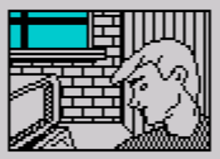 Jason Nicholls, writing as the Elven Adventurers, was the author of several interesting PAWed text adventures for the ZX Spectrum in the early 1990s.
Jason Nicholls, writing as the Elven Adventurers, was the author of several interesting PAWed text adventures for the ZX Spectrum in the early 1990s.
His games often featured unique presentation elements, combining cleverly constructed graphics with atmospheric descriptions. He managed to mix traditional horror stories with challenging adventure gameplay.
In June 2020, Jason very kindly agreed to answer some questions about the games that he'd written thirty years earlier.
You grew up in Idle, Bradford? What were your early experiences with computers?
Eccleshill, Bradford then Idle were my Spectrum days. My grandmother bought me and my older brother a Spectrum 48k for Christmas. That was my first computer; albeit shared.
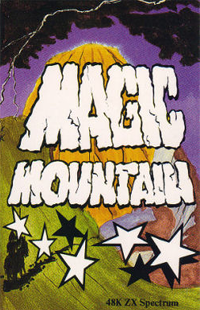 When did you get into adventure games?
When did you get into adventure games?
Not weeks after getting the Spectrum, I was in a CB radio shop with my grandmother and brother. They had a rack of Spectrum games and she said chose one each. I liked the picture on the front of a game called Magic Mountain by Phipps Software. I had no idea what a text adventure game was. I loved the mountain with the misty path leading up. I was hooked on adventures, even though the game kinda sucked. Knight's Quest was another of theirs that I remember playing.
Your name popped up pretty regularly in C&VG and Your Sinclair columns back in the day, where (like many of us at the time) you were either asking for help in games or offering solutions to other players. I notice that an early list of your solved games included the Hulk, Spiderman, Gremlins, Robin of Sherwood, Aftershock, Planet of Death, Espionage Island, Golden Apple… You obviously played a lot of Scott Adams and Artic games back when you started adventuring?
It's rather scary how you know all these things, Gareth. The Artic games pretty much sucked apart from Golden Apple; which was one of my most remembered. I liked graphical adventures, so I played many a Scott Adams game; although they tended to lack atmosphere and timing… the parser was the real challenge to them.
It's amazing how we all used to share information by post in those days; trading stamped self-addressed envelopes for solutions. Did you get much mail?
I remember writing to people who had solutions asking for tips. Doreen Bardon comes to mind. I had penpals I got off Your Sinclair. I used to correspond with Keith Campbell [the C&VG adventure columnist] a lot, outside of the magazine.
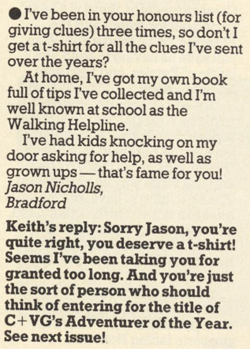 Speaking of Keith Campbell… you managed to win a T-Shirt for your efforts submitting hints to his column in C&VG magazine!
Speaking of Keith Campbell… you managed to win a T-Shirt for your efforts submitting hints to his column in C&VG magazine!
Gareth, Gareth, Gareth…. About that T-shirt… it's a weird story. I received it and a week later disappeared off the face of the world. My cellophaned pride! I asked my parents and brother, but they'd not seen it. It just went… Maybe it was karma???
Perhaps for the particularly amusing letter you submitted to C&VG, concerning the text adventure Earthbound, where you complained that your mum had discovered you "accidentally" typing a rude word into the program, and that she was appalled by the response the game gave!
Haha, busted. I don't even remember playing the game now. What a grass I was.
I'm amazed that your mum allowed you to play the Delta 4 games of Fergus McNeill, given some of the responses to swearing in those adventures!
I never actually played any of his games longer than a few minutes. I didn't actually like them. I never got one till late in my Spectrum days.
Early versions of your games do feature some Fergus McNeill references, though… The initial name you wrote games under was Delta 3. FERGUS is even the title of the loading screen on Daemon!
I was definitely not as inspired by his games as it would seem. I was more in awe of his success and the things I'd read about him.
The computer gaming magazines certainly liked him... Fergus was very much portrayed as a text adventure rockstar back in the 1980s! That image inspired a lot of other homegrown adventure authors.
I never played The Boggit or Robin of Sherlock. I was very much an individual with my own style. I was a young dyslexic kid loner in special classes in speech theory. I was inspired by his success and his circle of friends, but not his games. I did pay homage to Delta 4, though.
Indeed. Your early adventures had a newsletter program on the B-side; echoing Delta 4, who had a similar tape-filler called Sceptical?
Busted again. Yes, his Sceptical tapezine was what got my interest, not the games, and that was what made me create NewsDesk. I tried to contact Fergus about 12 years ago and he ignored me, so he's not all that.
 |
 |
 |
| NewsDesk... a tapezine on the B-Side of some Elven Adventurers games | ||
What was your early experience of writing games? Did you attempt to make a game in BASIC? Did you try earlier systems like the Quill and GAC before settling on the PAW as your authoring tool of choice? Were there any early adventures that never got published?
I wrote a few games in BASIC at an early age, I was in special classes for slow children, then went home and programmed on the Spectrum. I got a copy of the Quill and learnt that without instructions. Then I got the Illustrator, then went onto GAC, then onto PAW. Now I'm using Philip Richmond's TAB which is finally a dyslexic mind's dream for adventure writing… meaning it's very versatile.
You started selling your games yourself, in about 1990? Your "newsdisk" program says that Elven Adventurers were "a four person software house" consisting Jason Nicholls, Julie Nicholls, Judith Woods, and Brent Ash. Were they real people? You were writing and programming the games yourself, weren't you? Was there a desire to put together a "gang" like Fergus & Delta 4?
Yes, they were definitely all made up. Ash from Evildead. Julie was a girl I worshipped. But never would my games be Delta 4 games… they were a lot more. I pushed every adventure writing programs to the limit. I had tricks on PAW that no one knows. In Conman the graphics flash on the screen like in a Scott Adams game; digitised pictures on screen that had no delay. They were painstakingly gridded and inserted into an added text font, so they were already in the memory and not drawn slowly using the PAW's line and fill routines.
Oh, your adventures were definitely very different and uniquely your own; with some dark themes. Was horror a genre you felt more comfortable writing and exploring?
Yes, horror is big part of my life. I was going as a kid to video stores looking for horror films. I couldn't and still can't get enough horror. It was hard to migrate it to a 48k Spectrum. I believe I was the first to do a 2-player graphic text adventure on the Spectrum.
Yes, we should talk about your games! In your first adventure, Daemon, the player must survive the night in a haunted house; the very house that St. Oswald died in, that also just happens to have been built over a gateway to hell! What was the inspiration for the game?
The Haunting, a black and white movie, and the Legend of Hell House.
 |
 |
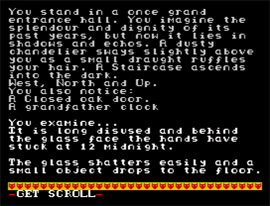 |
| Daemon for ZX Spectrum. A mostly text-based game, with occasional illustrations. | ||
The adventure Daemon would later be reworked into The Haunting. What was the reason behind that move and was there much that was changed?
The upgraded PAW they sold us. I can't remember the changes. Just a better look.
Although the presentation of Daemon was interesting, utilising PAW's ability to use the lower part of the screen for player input, the redesigned look of The Haunting was more minimalistic and elegant.
 |
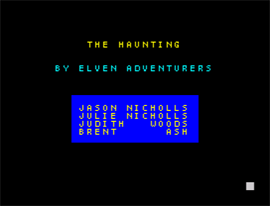 |
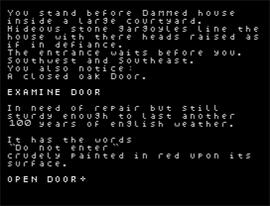 |
| The Haunting for ZX Spectrum. A reworked version of the earlier game, Daemon. | ||
Your game Dreamare was a two-parter in which the player had to save his little sister from the demon terrorising her dreams. In the credits, it says it was written by Julie Nicholls and programmed by Fergus Nicholls. Fergus Nicholls? Another nod to Delta 4 games?
That was an early version of the game.
That initial version of Dreamare contained some occasional, whole-screen illustrations but I know there was a second version of Dreamare, with some very cool, smaller location graphics, as that's the version I reviewed for the Sam Coupe Adventure Club back in the day. Sadly, that version doesn't seem to be archived anywhere! Do you still have a copy?
No copy, no. I revamped Conman, Haunting and Dreamare when a new version of PAW came out. I used the same method of split graphics to save memory.
It was a very interesting 'modular' art style, where individual elements were reused to construct the pictures of the locations.
It saved memory adding location graphics to each other and I believe added to the game. In PAW I deleted all the colour and ink codes and added them to the end ,so graphics flashed onto the screen at once like in the Scott Adams games. This technique worked well and actually speeded it up. No one else did this.
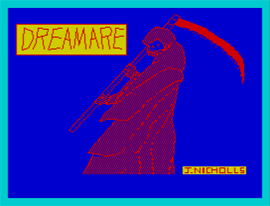 |
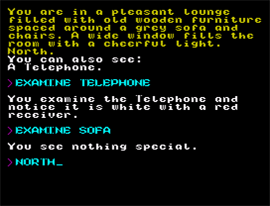 |
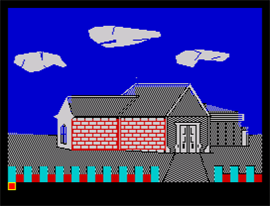 |
| Dreamare for ZX Spectrum. The original version is shown above and below are screenshots from the (currently lost) second edition. | ||
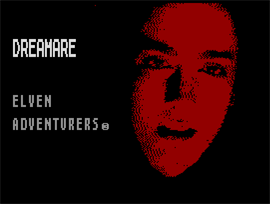 |
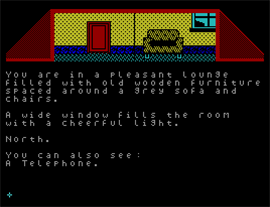 |
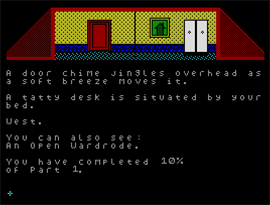 |
Dreamare was a well-paced adventure game, the first installment gradually eased the player into the game before difficulty ramped up in the second part. How did you design and plan out your adventures?
I never planned a game. I never wrote down a thing, just invented as I went. It's a waste time planning… just get going!
The three-part Conman the Barbaric was a departure from the horror genre, being a parody of traditional fantasy adventures. Each part was almost like a separate game, with titles very reminiscent of the old Fighting Fantasy series of books. Were they the inspiration for the spoofs or were you inspired more by other text adventures?
I've got a big collection of fighting fantasy books in my wardrobe...
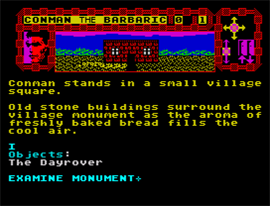 |
 |
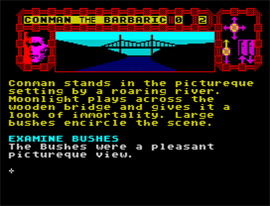 |
| Conman the Barbaric: a large three-part game for the ZX Spectrum. | ||
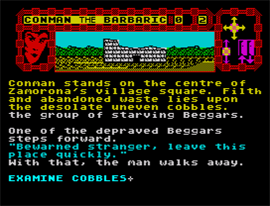 |
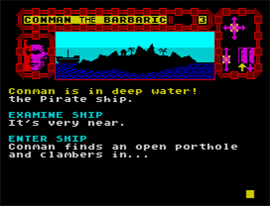 |
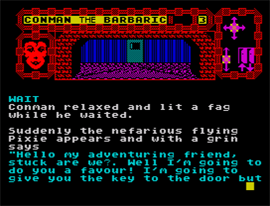 |
Part one of Conman featured on a Your Sinclair covertape. How did that come about?
Les from Northern Underground stole my game and sent it to them and pocketed 50 quid. He sold my games keeping all the money afterwards, then sold my games to other companies. I only sent him games as he was interested in selling them, then heard nothing.
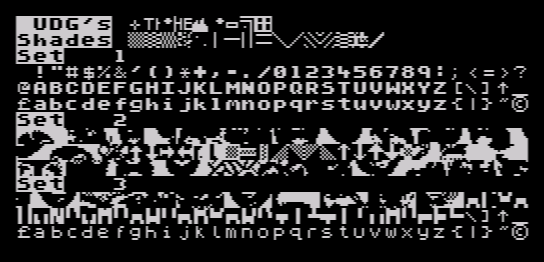 Rather than using the PAW's inbuilt vector graphics tool, some of the graphics in Conman were digitised. How did you produce these?
Rather than using the PAW's inbuilt vector graphics tool, some of the graphics in Conman were digitised. How did you produce these?
I bought a digitizer from a magazine. It captured 10 seconds of digitized film. You could then grab a screen shot.
This is where you used the trick of breaking the digitised image into little 8x8 character blocks that could be displayed using the additional font space in PAW?
Yeah, I had to manually copy each gridded image onto school graph paper then enter it back into a font in PAW. It's something PAW wasn't designed to do and hard to explain as no one else did it. It came on screen instantly as I'd already loaded in the font. It was genius!
I think Jon Lemmon, of Compass Software, went on to do something similar in his later games, but they came out after Conman. The graphics in your games looked crisper, as you only used digitised elements for the portraits, and your other clever systems for the main location pictures.
Your final released game, Deadly Silence was an extremely unusual project as it was a text adventure for two players, with each player getting thirty turns before control is swapped over. No documentation survives for the adventure. I wonder if you can tell us a little about it. What, for example, was the objective of the game?
I wanted to create a two-player horror graphical text game. The objective is that you played the killer and tried to kill the other player. The other player, the victim, had to survive. It was a game before its time.
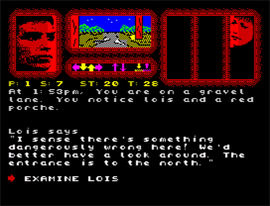 |
 |
 |
| Competitive two-player gameplay in Deadly Silence for the ZX Spectrum 48K. | ||
Well, it is certainly one of just a handful of old-school traditional text adventures with asynchronous multiplayer competitive gameplay! The screen layout is very well-designed, with a player portrait & statistics, a graphical exits display, digitised NPC portraits, and compact location graphics, all arranged neatly in the top half of the screen. Was that a challenge to produce?
I would say the most advanced PAW game ever. Ever…
There's certainly no other PAWed title quite like it!
 |
| Digitised character portraits from Deadly Silence |
Were there any games from back in the day that you never finished writing? You've mentioned Queen of the Mirror and The Invisible Man in the past?
Queen of the Mirror was a three-part game that is sadly not archived, but one I did sell from Elven Adventurers. The Invisible Man was a game that I completed but never sold.
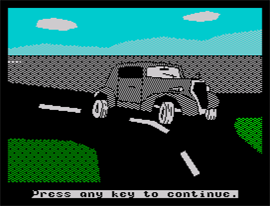 |
 |
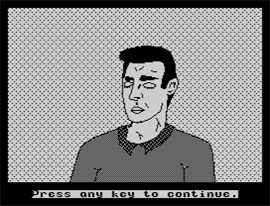 |
| (A selection of images from Jason's early ZX Spectrum adventures) | ||
It's sad that a lot of the original Elven Adventurers tapes haven't been preserved in the various online archives. They certainly aren't preserved in the way that you originally sold them, meaning that the history of the games isn't accurately documented.
For example, you mentioned the Northern Underground "re-releases" earlier, which you regard as unofficial releases. You produced and distributed the Elven Adventurers games yourself, but many of us actually encountered your adventures when they were being sold by other companies such as Northern Underground, Global Games and Venturesoft. I believe that you weren't aware of this at the time?
I'd never heard of Global Games or Venturesoft. This was news to me. No one other than Elven Adventurers has any right or claim to distribution.
I just got ripped off by idiots. "Send us games for review and we sell them for you and pay you £££". Never got a penny and they sold them as their games. Shame on them if they claim now that they own my games!
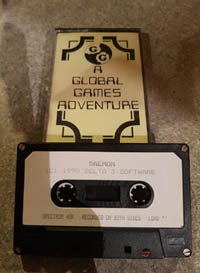 |
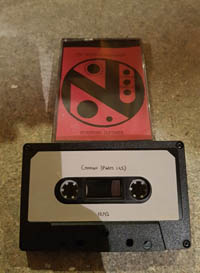 |
 |
| Some Global Games and Northern Underground versions of the Elven Adventurers games. Images courtesy of Steven Brown |
||
In more recent years, you had done some work on a text adventure called Emily's Dream, using the TAB system. Footage from an early YouTube video described it as "A must for any fan of Wuthering Heights and the Brontes. Help Emily Bronte inside her Dream. Unravel the mysterious of the wild and untamed moors." What can you tell us about the game?
Watch this space Gareth, you'll be first to know and review it.
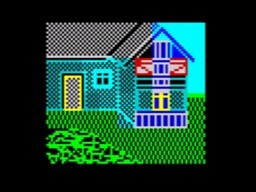 |
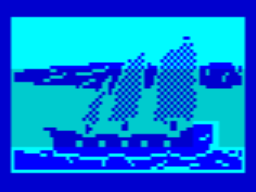 |
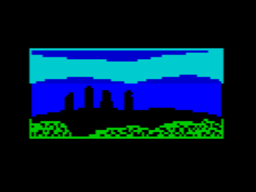 |
Many thanks to Jason Nicholls for taking the time to answer my questions. You can see his games at WOS and Spectrum Computing. (Please note that the "SAFE" Newdesk publications listed have nothing to do with him)
|
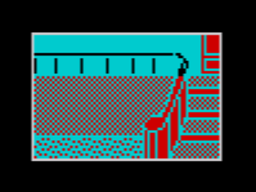 |
 |
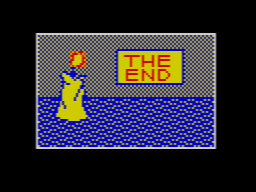 |